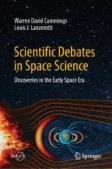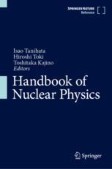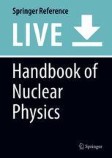Search
Search Results
-
Can We “Play Dirty” in ESR Dating?
Electron spin resonance (ESR) dating is currently one of the major dating techniques in archaeology, paleoanthropology, and paleontology. Years of...
-
OSL Dating Applied to Quaternary Deposits of the Mariuá Archipelago, Negro River, Amazon
In the Amazonian region, where quartzose sand sediments are abundant, OSL dating provides a direct method for establishing the depositional timing of...

-
A Paleosol Identified By Optically Stimulated Luminescence Dating in the Excavation of a Tank in Agreste of Pernambuco State, NE Brazil
Sediments from a tank excavation in the municipality of Fazenda Nova, Pernambuco, were analyzed to determine the origin and dating of two calcrete...

-
ESR/OSL Dating and Firing Temperature Determination of Archeological Pottery from Kumyer Location in Turkey
Archeological pottery is a good material that carries important data about ancient human life. Electron spin resonance (ESR) and optically stimulated...

-
Radiocarbon dating
Radiocarbon dating uses the decay of a radioactive isotope of carbon ( 14 C) to measure time and date objects containing carbon-bearing material. With...

-
Optically stimulated luminescence dating using quartz
Optically stimulated luminescence (OSL) signals from quartz can be used to determine when sedimentary archives were deposited. OSL dating uses the...

-
Using Dentine as well as Enamel in ESR Dating
Both tooth enamel and dentine contain hydroxyapatite, the mineral which provides the strong electron spin resonance (ESR) signal used in enamel...

-
Radiocarbon Dating User Samples with the BINP Accelerator Mass Spectrometer
AbstractThe performance of the BINP accelerator mass spectrometer in radiocarbon dating user samples is reviewed. The operation regime of the...

-
Cosmogenic nuclide techniques
Cosmogenic nuclide techniques have advanced the geosciences by providing tools for exposure age dating, burial dating, quantification of denudation...

-
Accelerator Mass Spectrometry and Its Applications in Archaeology, Geology, and Environmental Research
Accelerator mass spectrometry (AMS) is an ultrasensitive method for the measurement of isotope ratios in the range of 10−12–10−15. Most frequently...
-
Accelerator Mass Spectrometry and Its Applications in Archaeology, Geology, and Environmental Research
Accelerator mass spectrometry (AMS) is an ultrasensitive method for the measurement of isotope ratios in the range of 10−12–10−15. Most frequently...
-
The initial exploration for 26Al chronology in deep-sea ferromanganese crust
BackgroundThe deep-sea ferromanganese crust (DSFC) is a natural archive for recording the history of the Earth’s evolution, as one of the most common...

-
Sedimentary Processes on Venus
The sedimentary cycle, including the processes of erosion, transport, and lithification, is a key part of how planets evolve over time. Early images...

-
Measurements in Marine Geology: An Example in the Gulf of Taranto (Northern Ionian Sea)
This chapter reports a synthesis of the presentations at the past International Workshops on Metrology for the Sea that points out some applications...
-
EPR Investigation of Organic Radicals in Chert Found in Alluvial Soil of Kızılırmak Delta Basin
Chert samples found in alluvial soil of Kızılırmak Delta basin, Bafra District on the shore of Black Sea, were investigated with Electron...

-
50th anniversary review of the Mediterranean desiccation hypothesis
The first deep-sea drilling expedition in the Mediterranean chanced upon unanticipated discoveries when recovering deeply buried sediments of Late...

-
Did the Chicxulub Impact Cause the Cretaceous Extinctions?
It has long been know that the extinction of the dinosaurs, along with many other species, occurred at the end of the Cretaceous geological period....
-
Measurements of Radioactive 60Fe and 244Pu Deposits on Earth and Moon
Earth is exposed to nearby cosmic events. The solar system moves through the interstellar medium and collects interstellar dust particles that...
-
Measurements of Radioactive 60Fe and 244Pu Deposits on Earth and Moon
Earth is exposed to nearby cosmic events. The solar system moves through the interstellar medium and collects interstellar dust particles that...
-
Development of Ion Detector Based on Low-Pressure Time Projection Chamber for Accelerator Mass Spectrometry
AbstractA new ion identification method for accelerator mass spectrometry on the basis of measuring ion track ranges is proposed. A low pressure time...

